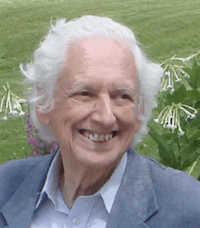Jerrold Meinwald
1927 – 2018
Jerrold (Jerry) Meinwald was born in New York City in 1927. At a very early age, Jerry developed a passion for chemistry after reading a biochemistry textbook on the beach. Together with his good friend, Michael Cava the two were producing homemade fireworks displays for their neighbors, and began performing experiments in a home laboratory, acquiring the necessary chemicals from drug stores and supply houses. Jerry graduated from Stuyvesant High School, and briefly attended Brooklyn College and Queens College. During 1945-1946 he served as an electronics technician in the US Navy, then earned a Ph.B. (1947) and B.S. (1948) in Chemistry at the University of Chicago. At Harvard University he completed M.A. (1950) and Ph.D. (1952) degrees, working with R.B. Woodward. Jerry joined the Cornell faculty in 1952 and spent most of his subsequent career in Ithaca. He was named Goldwin Smith Professor of Chemistry (1980-2005) and held the Andrew Mellon Foundation Professorship (1993-95). Jerry served on the Board of Editors of Organic Reactions for Volumes 18-25 (1970-77) and stayed on the Editorial Advisory Board until his death.
Jerry Meinwald’s work was widely recognized across the world. He was elected to the National Academy of Sciences (1969), the American Academy of Arts and Sciences (1970, serving as secretary from 2005-2016), and the American Philosophical Society (1987). He was an Alfred P. Sloan Foundation Fellow (1958-62) and twice a John Simon Guggenheim Foundation Fellow (1960-61 and 1976-77). His awards include the Tyler Prize in Environmental Achievement (1990), the Heyrovsky Medal of the Academy of Sciences of the Czech Republic (1996), the American Chemical Society’s Roger Adams Award in Organic Chemistry (2005), the Grand Prix de la Fondation de la Maison de la Chimie (2006), the Benjamin Franklin Medal in Chemistry (2013), and the Nakanishi Award of the Chemical Society of Japan (2014). In 2014, President Obama presented him the 2012 National Medal of Science.
It is difficult to overstate the impact of Meinwald’s work in the field of chemical ecology, since as its earliest practitioner, he set the standards of excellence by which all others in the field are judged. By focusing on biotic interactions and their mediating molecules – on the signals of courtship, defense, and parental maintenance – Jerry (along with Tom Eisner) established beyond any doubt that both the theoretical and the practical value of nature lies in its molecules. Through discoveries that have become landmarks, he has elucidated the intricacies of countless natural interactions involving insects and plants. Acutely aware of the long-range implications of species loss, he and Tom Eisner argued persuasively, through their extensive publications and lectures worldwide, for the preservation of nature and the chemical capital it provides.
Jerry’s first major plant-related chemical discovery was to establish the structure of nepetalactone, the component in “catnip” that attracts and intrigues cats. Returning to plants again years later in a spectacular study of the chemistry of lepidopteran courtship, Jerry showed how female moths use compounds from a plant dietary source to screen for the most fit male sexual partners. In essence, the female tiger moth, Utetheisa ornatrix, emits a mixture of C18 trienes and tetraenes that attracts males from a distance. A courting male then signals the female at close range with a pheromone biosynthesized from a plant-derived that the male has sequestered from his diet.
Females avoid mating with a male who does not provide this chemical cue. However, the male with the appropriate pheromone is accepted, and transmits to the female a spermatophor (up to 10% of his body weight!) containing not only sperm, but also residual alkaloid. Some of the alkaloid is retained by the female and some is incorporated into her fertilized eggs, rendering the female and her eggs unpalatable to predators and parasites.
During his long career at Cornell, Jerry trained generations of chemists, including many leading researchers in both organic chemistry and chemical ecology. He published over 400 journal articles with some 200 collaborators. In the early 1970s, he was a founding Research Director of the International Center for Insect Physiology and Ecology headquartered in Nairobi, Kenya.
Jerry Meinwald was also a superbly gifted teacher, and taught Cornell’s legendary “Introduction to Organic Chemistry” for many years. He went on to create the highly innovative course, “The Language of Chemistry,” which helped many hundreds of “nonscientist” Cornell undergraduates meet their science requirement while learning a significant amount of contemporary organic chemistry. Educating nonscientists was important to Jerry; he strived to boost scientific literacy among non-science majors at the college and university level. In 2010 he co-headed an American Academy of Arts and Sciences study of “Science in the Liberal Arts Curriculum,” which was aimed at examining what science requirements our institutions of higher learning have established for their non-science majors, why they have these requirements, whether those requirements actually produced the desired results, and whether current curricula might be modernized and strengthened to produce a more science-literate citizenry.
Jerry was a talented flutist. He studied flute with Arthur Lora, James Pappoutsakis, and Marcel Moyse. Throughout his life, he enjoyed playing music with (and for) colleagues, friends, and family members, often with wife Charlotte Greenspan at the keyboard. One of his friends recounts traveling with him when a flight to a chemical meeting was delayed. He sat down in the midst of an impatient crowd, took out his flute and started practicing. He and his wife were present at it seems every Cornell musical event.
Jerry Meinwald is survived by Charlotte Greenspan, his wife of 37 years; their daughter, Julia; and Constance and Pamela, daughters of his first marriage. He is also survived by his first wife, Yvonne Chu, who was his earliest long-term chemical collaborator.
To everyone, not just his colleagues, Jerry was a sweet man. It is impossible to think of him without a smile. And that is how he will be remembered.
Bruce Ganem
Cornell University
Ithaca, New York


